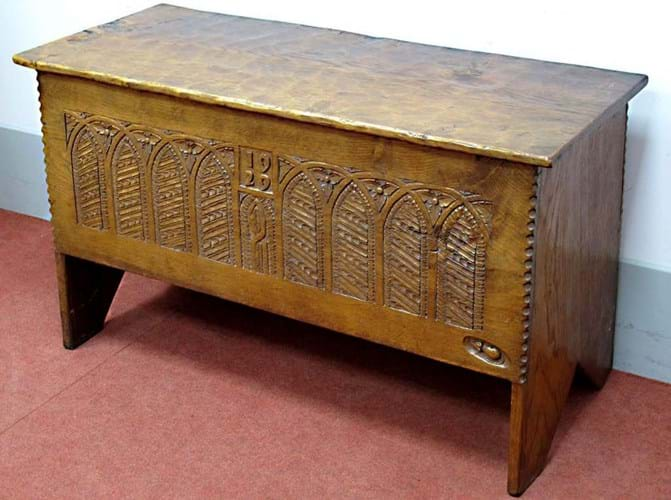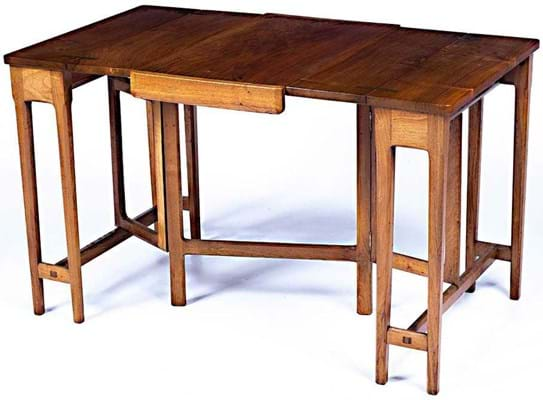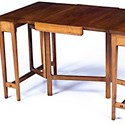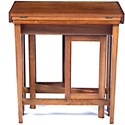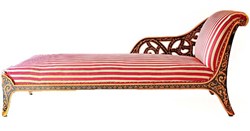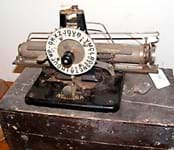These pieces made during the tenure of founder Robert Thompson have a distinctive appearance and after close to a century of use and oxidisation have acquired the patina of age.
A good example was the oak blanket chest that came for sale at Sheffield Auction Gallery (20% buyer’s premium) on March 18.
As well as the early use of the mouse (carved in a recess rather than in profile), it is worked with chip-carved arcaded decoration, an adzed top and is dated 1929. It looked a bargain at the estimate of £800-1200. The hammer price of £12,000 was less so.
Relatively little Mouseman is dated in this way; Sworders sold a dresser dated 1930 for £35,000 as part of the Horlicks collection in 2018.
Extended welcome
A later example of Arts & Crafts furniture was offered at Mallams (25% buyer’s premium) in Cheltenham on March 16.
Fred Francis Foster (d.1968) does not have the immediate name recognition of Peter Waals or Sidney Barnsley but he worked alongside both men and other Cotswold School craftsmen.
A founding member of the Gloucestershire Guild of Craftsmen, he lived and worked in Whiteway Colony near Stroud.
This walnut occasional table is signed in ink Designed & Made by Fred F Foster, 1951, Camp, Nr Stroud, Glos. It is a metamorphic piece, extending to 3ft (90cm) across from a diminutive ‘fold-away’ 22in (54cm) wide.
Cotswolds School furniture from this mid-century period is enjoying something of a purple patch in the saleroom. This table, guided at £300- 500 as part of a Modern Living sale, took £5200 from an overseas buyer.
Dixon detected
A good Arts & Crafts brass table lamp sold for £3600 (estimate £150-250 at Hartleys (17.5% buyer’s premium) in Ilkley on March 16.
It was identified by bidders as a design by Arthur Stansfeld Dixon (1856-1929), the English metal worker and architect who founded the Birmingham Guild of Handicraft in 1890.
This example shares the same conical shade as another better-known Dixon lamp: the version in the V&A given as a wedding gift to Charles Robert Ashbee in 1895.
The Birmingham Guild of Handicraft (its headquarters in Great Charles Street still extant) was the first to make Arts & Crafts metalwork in a city that had become synonymous with the worst of Victorian industrialisation.
Dixon wrote: “A man should not be cut off from the full effect of his work…if art is to live and not die, mens work must be so arranged that they may be able to keep their souls alive…the craftsman must come before the merchant, and the machine must be subservient to the hand of man.”
He designed simple metalwork with an emphasis on hand craftsmanship.
Alan Crawford’s 1984 catalogue for the exhibition By Hammer and Hand at Birmingham Museum and Art Gallery includes a contemporary illustration of a display of similar lamps by the guild.
Despite the modest estimate, the hammer price was among the highest for this model
Several other examples of this ‘horn’ lamp have appeared for sale in recent memory. Others sold at Woolley & Wallis in 2014 (£3000), Moore Allen & Innocent in 2016 (£2300) and Lyon & Turnbull (£1600).


